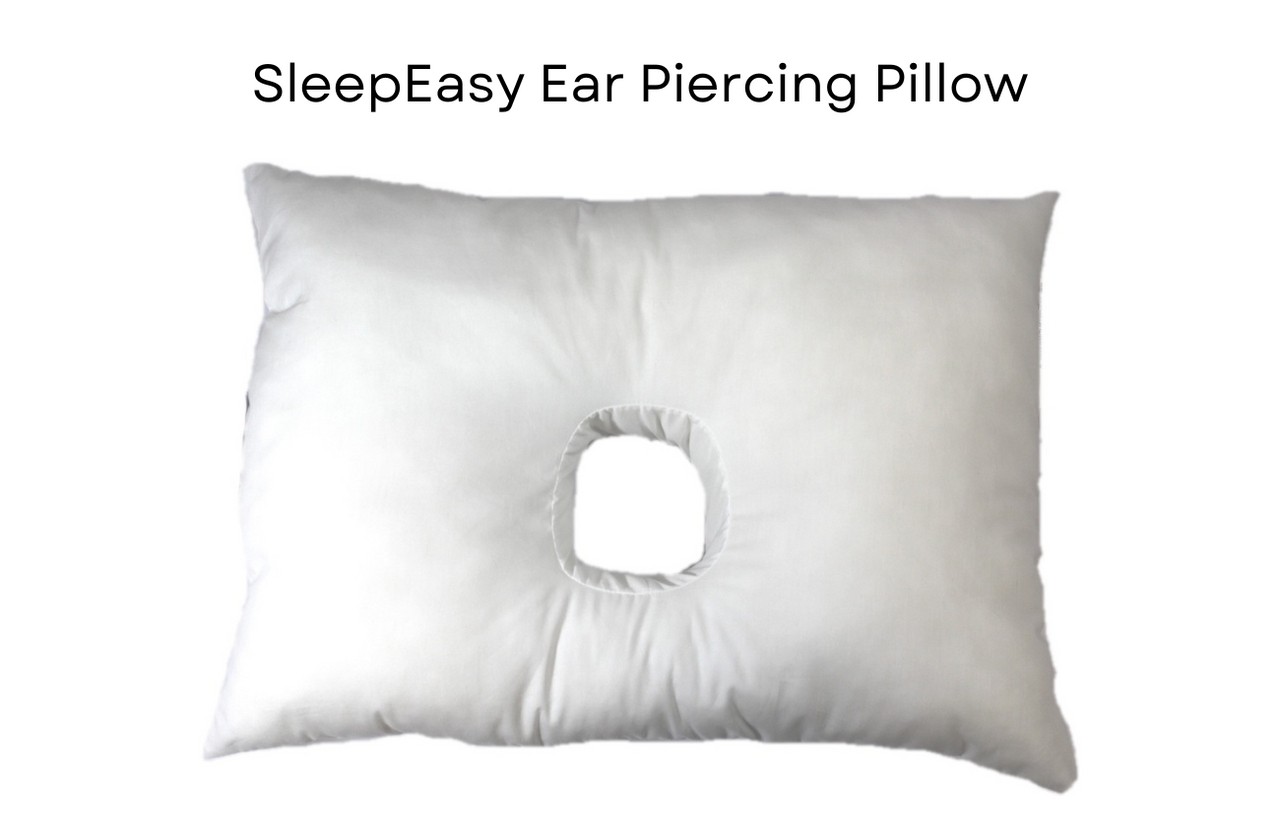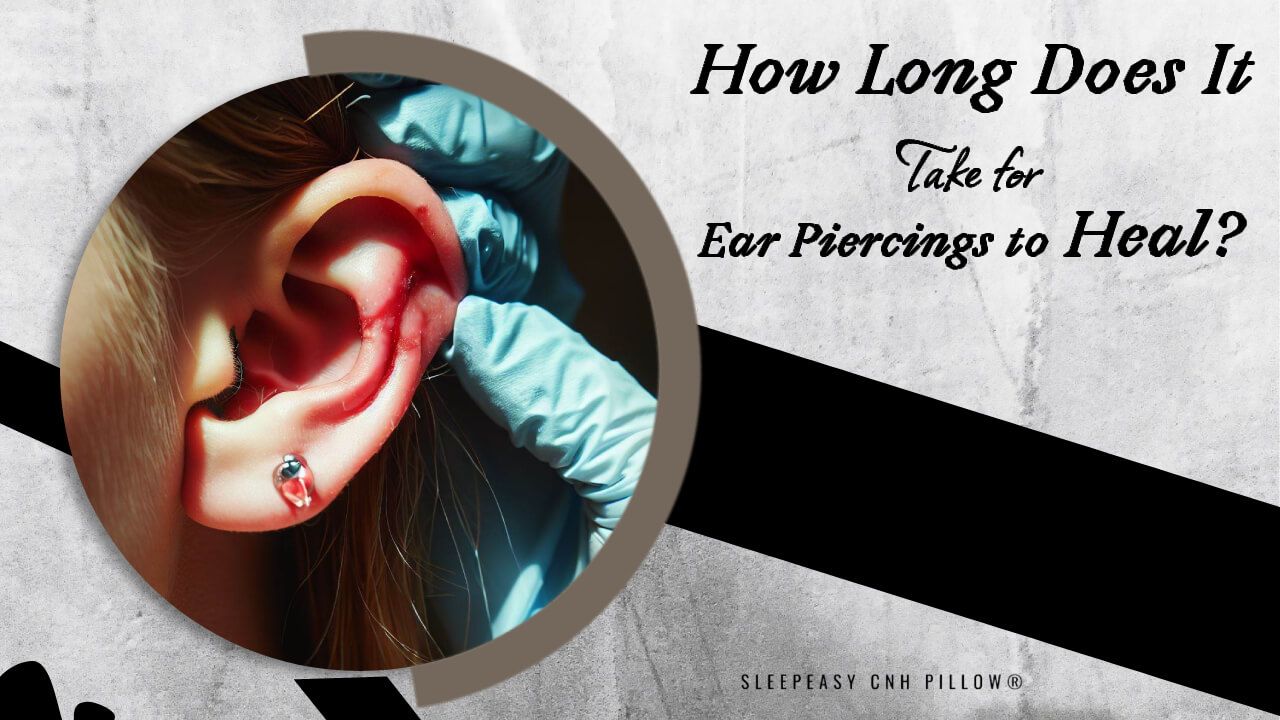How Long Does It Take for Ear Piercings to Heal Safely?
Posted by Dr. Cannon on Dec 20th 2022
Ear Piercing Healing Time
Whether you're opting for a classic lobe piercing or exploring the edgier world of cartilage piercings, understanding the healing journey is key to avoiding complications. One of the top concerns people have is: how long does it take for ear piercings to heal?
In this ultimate guide, we’ll walk you through everything you need to know about ear piercings recovery time, including detailed healing timelines, factors that can affect your recovery, essential aftercare tips, and the most common mistakes to avoid. Let’s help you heal with confidence.
Key Highlights
- Different ear piercings typically take 2 to 5 months to heal, with cartilage types needing longer care and gentle, consistent aftercare for a smooth recovery.
- Healing times also vary by age and gender, with children and women healing lobe piercings faster, while cartilage piercings take longer in adults.
- Proper piercing aftercare like daily cleaning can significantly speed up healing and prevent infection.
- Avoid common ear piercing mistakes which can delay healing and cause infection.
- A piercing-friendly pillow reduces pressure promoting faster healing for fresh ear piercings.

Industrial (Scaffold) Piercing
- Downsize Time: 6–8 weeks
- Full Healing Time: 4–5 months
This bold double-cartilage piercing connects two points of the upper ear with a straight barbell. It’s visually striking but prone to irritation due to tension and movement between the two holes.
Forward Helix Piercing
- Downsize Time: 6–8 weeks
- Full Healing Time: 3–4 months
Placed at the front of the upper ear cartilage, this piercing offers a sleek, minimalist style. Downsizing early helps minimize irritation and improves comfort.
Tragus Piercing
- Downsize Time: 6–8 weeks
- Full Healing Time: 3–4 months
This subtle cartilage piercing goes through the small flap in front of the ear canal. Its low-movement location reduces trauma, but slower blood flow can prolong healing.
Standard Lobe Piercing
- Downsize Time: 4–6 weeks
- Full Healing Time:2–3 months
As the softest and most traditional ear piercing, the standard lobe is fast-healing and beginner-friendly. Downsizing around the 1-month mark helps prevent irritation.
Upper Lobe Piercing
- Downsize Time: 4–6 weeks
- Full Healing Time: 2–3 months
Located just above the standard lobe, this piercing is perfect for stacking and styling. It heals easily and downsizing early improves jewelry fit.
Snug Piercing
- Downsize Time: 8–10 weeks
- Full Healing Time: 3–4 months
This inner cartilage piercing runs through the ear’s ridge, offering a bold, standout look. It’s one of the more painful piercings and can swell significantly.
Helix Piercing
- Downsize Time: 6–8 weeks
- Full Healing Time: 3–4 months
A fan favorite, the helix sits along the outer upper rim. It’s stylish, stackable, and heals fairly easily with regular care. Downsizing helps prevent snags from hair or clothes.
Outer Conch Piercing
- Downsize Time: 6–8 weeks
- Full Healing Time: 3–4 months
Set in the flat cartilage near the ear canal, the outer conch is ideal for large hoops or bold studs. Downsizing once swelling subsides improves comfort and jewelry placement.
Stages of Ear Piercing Healing
Understanding the healing process can help you identify what's normal and what’s not during your ear piercing recovery time.
- Inflammatory Phase (0–7 days)
Swelling, redness, and tenderness are common. Slight bleeding or clear fluid discharge may occur as your body responds to the new piercing. - Proliferative Phase (1–6 weeks)
During this phase, new tissue starts forming, and discomfort begins to reduce. However, it’s important to avoid changing jewelry too soon to allow proper healing. - Maturation Phase (6 weeks–12 months)
This final phase marks full healing of both internal and external tissue. For cartilage piercings like the midi piercing, which is located on the upper ear’s inner cartilage between the tragus and helix, the healing process tends to be longer and more delicate.
Factors That Affect Ear Piercing Healing Time
- Piercing Location
- Lobe piercings heal faster (usually 6–8 weeks) due to soft tissue and good blood flow.
- Cartilage piercings (like helix, tragus, and midi) take longer—often 3 to 12 months—because cartilage has less blood circulation and heals slower.
- Piercing Technique
- Piercings done with a sterile needle generally heal better and faster than those done with a piercing gun, which can cause tissue trauma.
- Jewelry Material
- Using hypoallergenic materials such as surgical steel, titanium, or 14k gold reduces the risk of allergic reactions and irritation, helping speed up healing.
- Aftercare Routine
- Proper cleaning with saline solution, avoiding unnecessary touching, and protecting the piercing from irritants are crucial.
- Poor aftercare can prolong healing or cause infections.
- Individual Health and Immune System
- Your overall health, nutrition, and immune function greatly impact healing time.
- Smokers, people with diabetes, or those with weakened immune systems may experience slower recovery.
- Recommended: Consider exploring tips for ear piercing care.
Why Opt for a Piercing-Friendly Pillow?
An ear-adapted pillow is essential for anyone healing from a fresh piercing. Traditional pillows put pressure on the piercing, causing irritation and prolonged healing. A pillow with an ear hole eliminates direct contact, reducing discomfort and allowing better airflow, which is crucial for healing.
Benefits of Using an Ear-Adapted Pillow:
-
Prevents irritation – No pressure on fresh piercings.
-
Speeds up healing – Allows better airflow, essential for quick recovery.
-
Prevents infection – Minimizes contact with bacteria while sleeping.
-
Ideal for side sleepers – Ensures a comfortable position.
️Speed up your piercing healing and sleep comfortably
get your piercing-friendly pillow today!Piercing Aftercare Tips for Faster Healing
Follow these essential steps to heal your piercing smoothly:
1. Clean Your Piercing Daily
-
Use saline solution or an alcohol-free antiseptic.
-
Avoid hydrogen peroxide or alcohol—they dry out the skin and delay healing.
-
Clean twice a day using a cotton pad.
2. Avoid Touching or Rotating Your Jewelry
-
Touching introduces bacteria.
-
Never change your earrings before the healing period is complete.
3. Sleep on a Pillow with an Ear Hole
-
Prevents pressure and irritation.
-
Ideal for side sleepers with new piercings.
4. Be Mindful of Hair & Clothing
-
Keep hair away from fresh piercings to prevent bacteria transfer.
-
Avoid hats or scarves that may rub against the area.
5. Monitor for Signs of Infection
Red flags include redness, swelling, pus, or prolonged pain. If symptoms persist, consult a professional piercer or doctor.
Natural Remedies for Faster Healing
Besides saline solution, some natural remedies can aid faster healing:
- Chamomile Tea Compress: Helps reduce inflammation and soothes irritation.
- Aloe Vera Gel: Known for its antibacterial properties, it can calm redness and swelling.
- Tea Tree Oil (Diluted): A natural antiseptic that prevents infections and speeds up healing.
Normal Things During Ear Piercing’s Healing Time
When you’re wondering about your ear piercing heal time, it’s helpful to know what sensations and signs are normal during the recovery process. Not every discomfort means something is wrong, many symptoms are part of your body’s natural healing response.
- Mild redness and swelling: This is expected especially in the first few days as your body reacts to the new piercing.
- Tenderness or slight soreness: Some sensitivity is normal, particularly when touching or cleaning the area.
- Clear or slightly white discharge: This fluid is part of the healing process and helps protect the piercing from infection.
- Itching or dryness: As new skin forms, you might experience some itchiness or flaky skin around the piercing site.
- Formation of a small crust or scab: This is natural as your body repairs itself, but avoid picking at it to prevent irritation.
How Long Do Ears Take to Heal After Piercing?
The healing time depends on the piercing type and care routine.
-
Lobe piercings heal in 6-8 weeks, while cartilage piercings take 2-12 months due to reduced blood flow.
-
Industrial piercings (barbell piercings) require 6-12 months for full healing.
-
Following proper aftercare – like cleaning with saline solution, avoiding unnecessary touching, and using a piercing-friendly pillow – can speed up the process.
If you experience prolonged redness, swelling, or pain, consult a professional to prevent complications.7
Healing Times by Age and Gender
Children and Teenagers
- Lobe Piercings: Typically heal within 4 to 8 weeks.
- Cartilage Piercings: Can take 3 to 12 months, with younger skin often healing faster due to higher cell regeneration rates.
Adults
- Lobe Piercings: Usually take 6 to 8 weeks to heal completely.
- Cartilage Piercings: Can take anywhere from 6 to 12 months, with older adults potentially experiencing slower healing times.
Gender Differences
- Healing times can vary slightly between males and females due to hormonal differences and skin thickness. Generally, women might experience slightly faster healing times for lobe piercings, while cartilage piercings' healing times remain similar across genders.
Mistakes to Avoid During Ear Piercing Recovery Time
- Changing jewelry too early before the piercing is fully healed
- Touching the piercing with unwashed hands
- Using harsh cleaning agents like alcohol or hydrogen peroxide
- Sleeping on the pierced ear and putting pressure on it
- Ignoring signs of infection such as excessive redness, swelling, or discharge
- Swimming in pools, lakes, or hot tubs too soon after piercing
- Twisting, turning, or playing with the jewelry excessively
- Using low-quality or non-hypoallergenic jewelry
- Failing to follow the aftercare instructions provided by your piercer
- Exposing the piercing to dirt, sweat, or irritants without proper cleaning

SleepEasy Ear piercing Pillow
Ear piercing can be painful; don’t make it more painful than it has to be. Use an ear piercing pillow to save yourself ear pain and get sound sleep.
SleepEasy Ear piercing Pillow$59.99
Buy NowConclusion
Proper care and patience are key to a well-healed ear piercing. By following these ear piercing aftercare tips and avoiding common mistakes, you can ensure a smooth healing process. If you notice prolonged irritation or infection signs, consult a professional for advice.
Need a comfortable pillow with an ear hole? Check out piercing-friendly pillows here for better healing support!
Disclaimer
The information provided in this blog is for informational purposes only and should not be considered medical advice. Always consult with a professional piercer or healthcare provider for specific guidance.
FAQs
How can I reduce swelling after a new ear piercing?
Applying a cold compress can help with swelling, and taking anti-inflammatory medicine if needed (consult a doctor first).
How long do ear piercings take to heal before changing earrings?
Wait 6-8 weeks for lobe piercings and 3-12 months for cartilage piercings before changing jewelry.
What’s the best type of jewelry for a fresh piercing?
Titanium, surgical steel, or 14k gold earrings are the safest options.
Can I sleep on my piercing?
Avoid sleeping on a new piercing; use a pillow ear support to reduce pressure.
Can I heal my new piercing within a week?
Piercings take time to heal fully, but you can promote faster healing by cleaning with saline solution, avoiding touching, sleeping on a pillow with an ear hole, and maintaining a healthy diet. However, complete healing in a week is unlikely, especially for cartilage piercings.
What is normal during a piercing's healing process?
Mild redness, swelling, tenderness, and clear or white discharge are normal in the early stages. These symptoms should gradually improve. However, excessive pain, pus, or prolonged swelling may indicate an infection.
How long do ear piercings take to heal before I can swim?
It’s best to avoid swimming for at least 4–6 weeks, depending on your ear piercing heal time, to reduce the risk of infection.
How often should I clean my new piercing?
Clean your piercing twice daily with a sterile saline solution to keep it free from bacteria and promote healthy healing.


